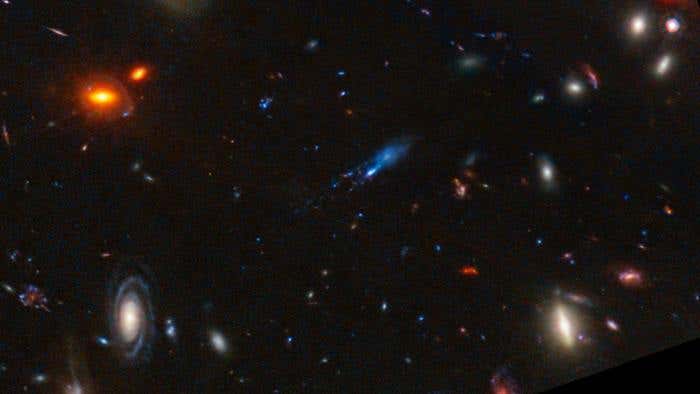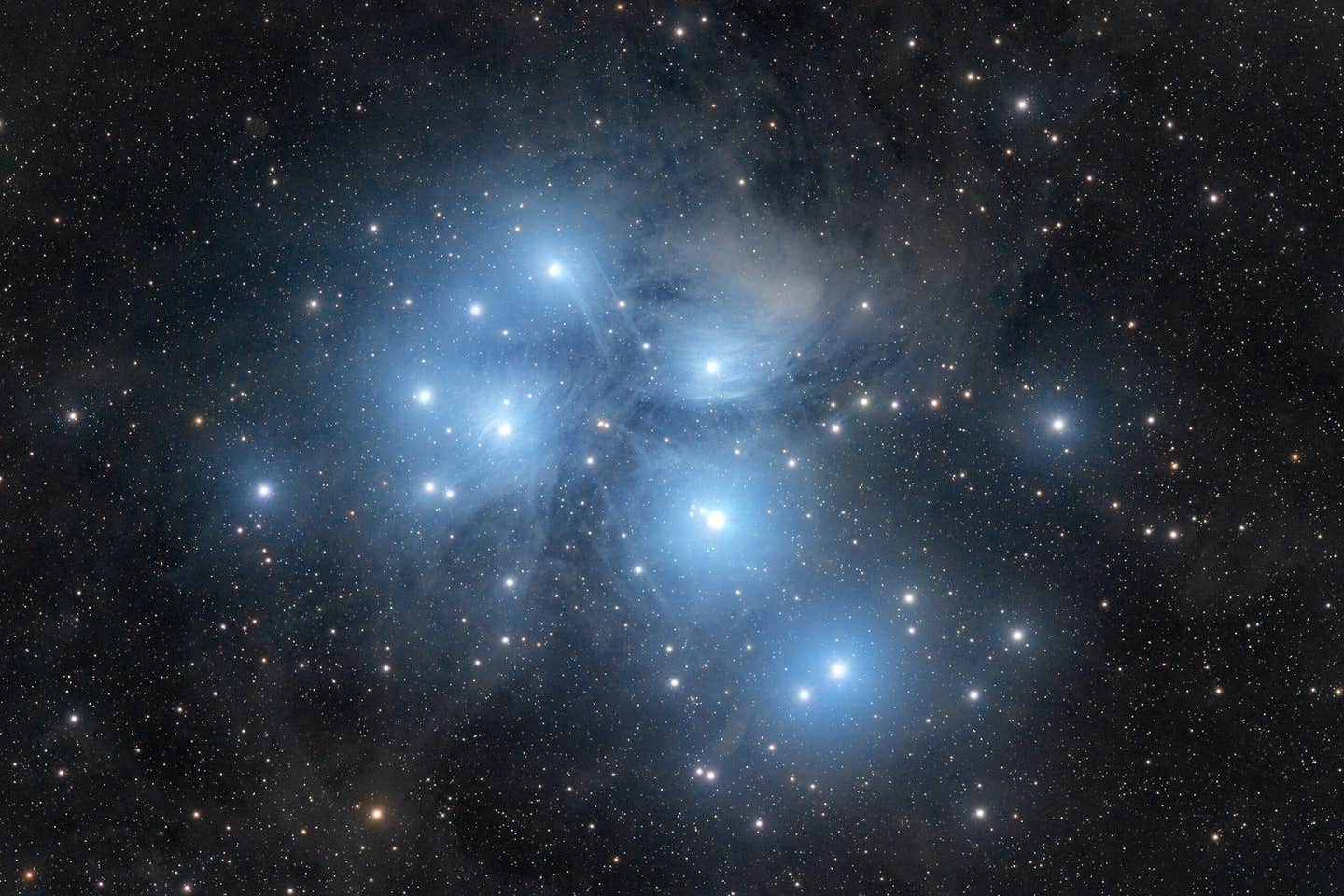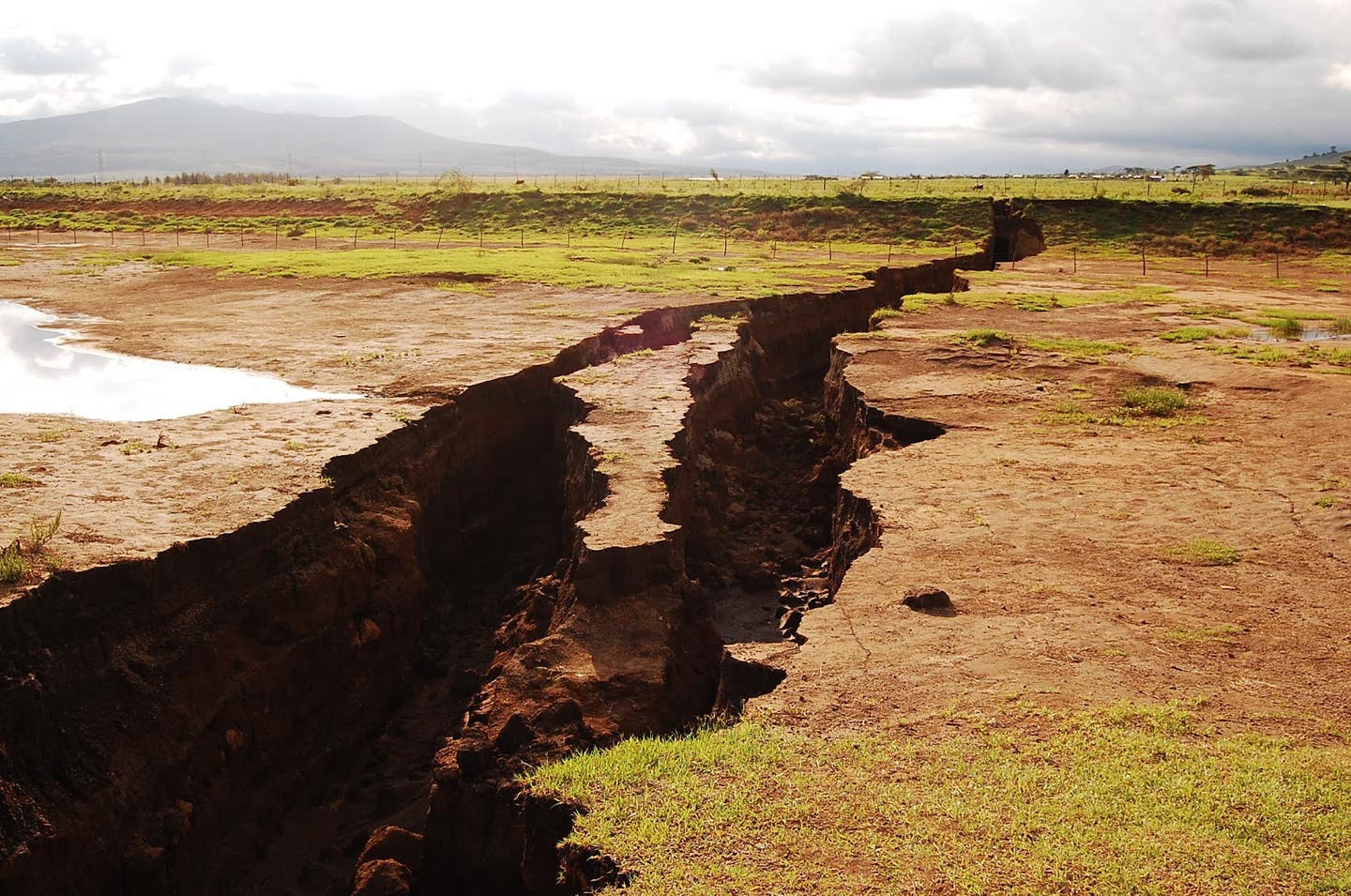Astronomers discover a galaxy making stars 180x faster than the Milky Way
A far off galaxy forming stars 180 times faster than the Milky Way reshapes what you know about dust and growth in the early universe.

 Edited By: Joshua Shavit
Edited By: Joshua Shavit

Galaxy Y1 shines thanks to dust grains heated by newly-formed stars. Image from the James Webb telescope. (CREDIT: NASA, ESA, CSA, STScI, J. Diego (Instituto de Física de Cantabria, Spain), J. D’Silva (U. Western Australia), A. Koekemoer (STScI), J. Summers & R. Windhorst (ASU), and H. Yan (U. Missouri))
The night sky often feels calm, yet the early universe tells a very different story. A newly studied ancient galaxy, seen as it was more than 13 billion years ago, reveals a level of star making so intense that it challenges what you might expect from young cosmic systems. This discovery gives you a rare window into how some of the first galaxies grew at breakneck speed and helps researchers close in on long standing questions about the origins of cosmic dust.
Taking the Temperature of a Young Galaxy
An international team led by Tom Bakx at Chalmers University of Technology set out to better understand a distant galaxy called Y1. Powerful telescopes have shown that many early galaxies formed stars under conditions unlike anything near the Milky Way today, and Y1 raised immediate curiosity. Light from this galaxy carries signs of glowing dust, which hinted that something unusual was happening inside it.
“We’re looking back to a time when the universe was making stars much faster than today,” Bakx says. Earlier work had already revealed glowing dust in Y1, the most distant galaxy where dust has ever been directly detected. For astronomers, that was a major clue. It suggested a star factory running hotter or harder than expected. To test that idea, the team focused on one key measurement, the galaxy’s temperature.
ALMA Reveals an Extreme Star Factory
To make this measurement, the scientists used the Atacama Large Millimeter or submillimeter Array, better known as ALMA. Its high-altitude home in Chile allows it to detect faint wavelengths that carry information from early galaxies. The researchers tuned their view to 0.44 millimeters using ALMA’s Band 9 instrument and captured bright emission from Y1’s dust.
“When we saw how bright this galaxy shines compared to other wavelengths, we immediately knew we were looking at something truly special,” Bakx says.
The result surprised them. Y1’s dust glows at about 90 Kelvin, which is roughly minus 180 degrees Celsius. That temperature may sound cold to you, but it is far warmer than the dust found in other similar galaxies. It confirmed that Y1 is not just forming stars but doing so under extreme conditions.
Yoichi Tamura of Nagoya University explains it simply. “The temperature is certainly chilly compared to household dust on Earth, but it’s much warmer than any other comparable galaxy we’ve seen. This confirmed that it really is an extreme star factory.”
Star Birth at an Unsustainable Pace
Y1 builds new stars at a pace of more than 180 solar masses each year. For comparison, the Milky Way makes only about one solar mass annually. This frantic activity cannot continue for long. Bursts like this seem to flare up briefly and then fade. Still, they may have been common during the universe’s early years, which matters if you want to understand how galaxies formed and grew so quickly.
Bakx hopes to find out how often these bursts happened. “We don’t know how common such phases might be in the early universe, so in the future we want to look for more examples of star factories like this. We also plan to use the high resolution capabilities of ALMA to take a closer look at how this galaxy works,” he says.
Shedding Light on a Cosmic Dust Mystery
The unusually warm dust in Y1 may also answer another puzzle. Many early galaxies contain more dust than scientists believed possible in their short lifetimes. Dust forms mainly around older stars, yet galaxies like Y1 simply have not existed long enough to make much of it.
Laura Sommovigo of the Flatiron Institute and Columbia University explains how Y1 helps resolve that contradiction. “Galaxies in the early universe seem to be too young for the amount of dust they contain. That’s strange, because they don’t have enough old stars, around which most dust grains are created,” she says. But there is a twist. “A small amount of warm dust can be just as bright as large amounts of cool dust, and that’s exactly what we’re seeing in Y1. Even though these galaxies are still young and don’t yet contain much heavy elements or dust, what they do have is both hot and bright.”
If Y1 is not unique, many early galaxies may contain less dust than astronomers assumed. The dust they do contain simply glows stronger because it is warmer than expected. This changes how scientists interpret distant observations and could shift long held ideas about how galaxies gathered material in their early days.
Practical Implications of the Research
This work helps you see how galaxies formed under intense and short lived bursts of activity. It also gives astronomers new tools to understand the amount and role of dust in early galaxies.
Warmer dust means researchers may need to rethink how quickly galaxies produced heavy elements and how they accumulated the material needed for later star systems.
In the long run, findings like these bring scientists closer to understanding how the universe built the structures you see today, from star clusters to planets and the ingredients for life.
Research findings are available online in the journal Monthly Notices of the Royal Astronomical Society.
Related Stories
- ALMA detector reveals how the universe builds its largest and brightest stars
- Scientists solve mystery of the fastest stars in the galaxy
- White dwarf star is still feasting on dead Earth-like planet 3 billion years later
Like these kind of feel good stories? Get The Brighter Side of News' newsletter.
Joseph Shavit
Science News Writer, Editor-At-Large and Publisher
Joseph Shavit, based in Los Angeles, is a seasoned science journalist, editor and co-founder of The Brighter Side of News, where he transforms complex discoveries into clear, engaging stories for general readers. With experience at major media groups like Times Mirror and Tribune, he writes with both authority and curiosity. His work spans astronomy, physics, quantum mechanics, climate change, artificial intelligence, health, and medicine. Known for linking breakthroughs to real-world markets, he highlights how research transitions into products and industries that shape daily life.



